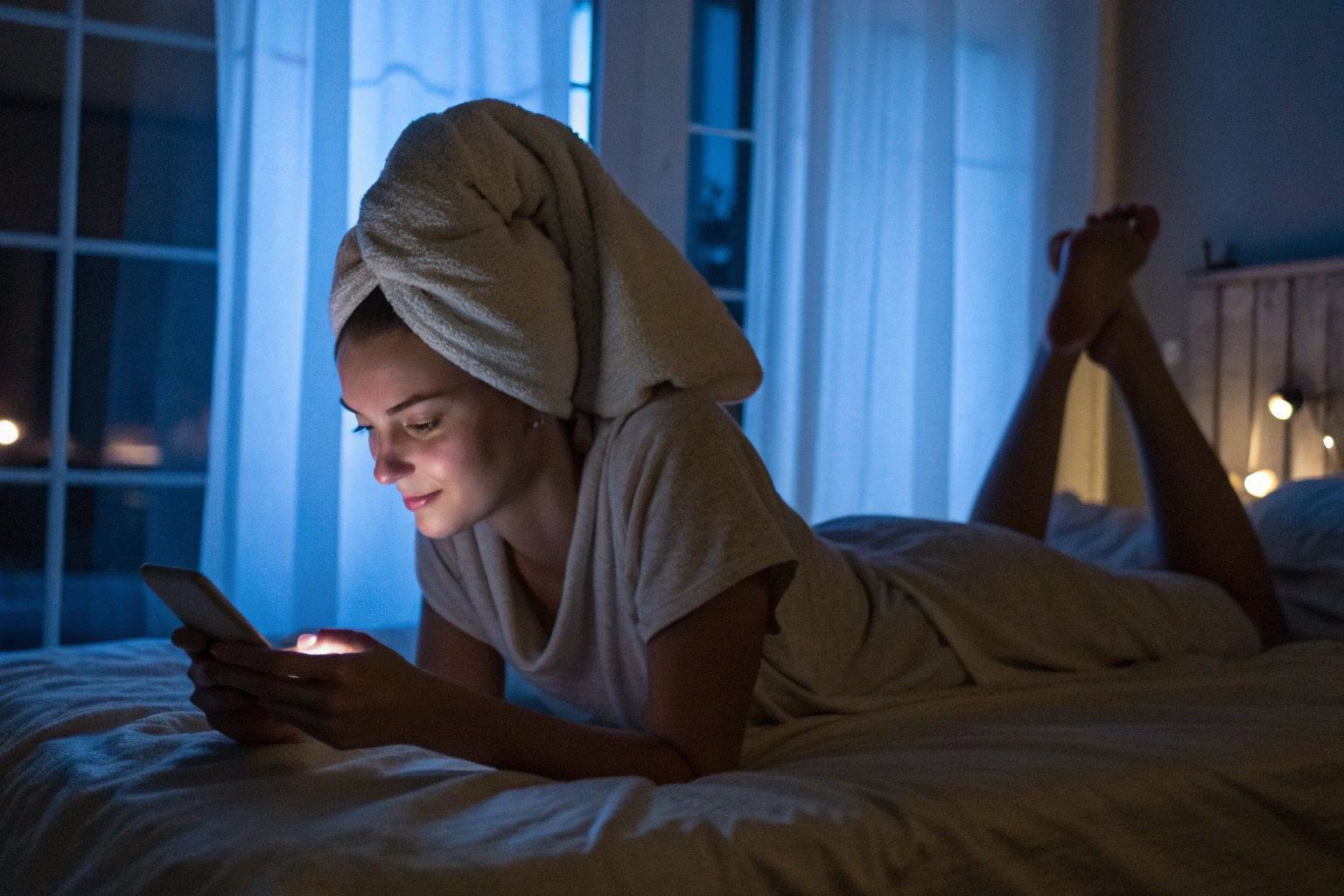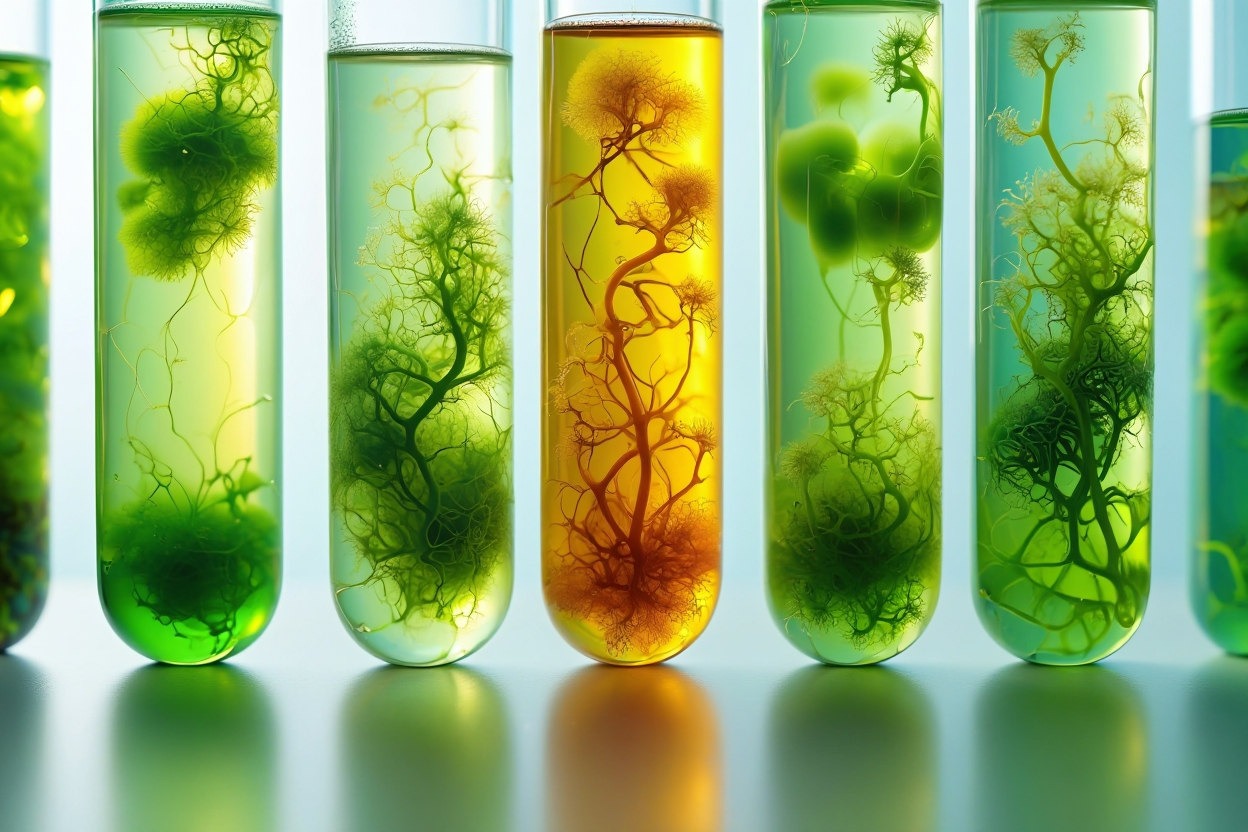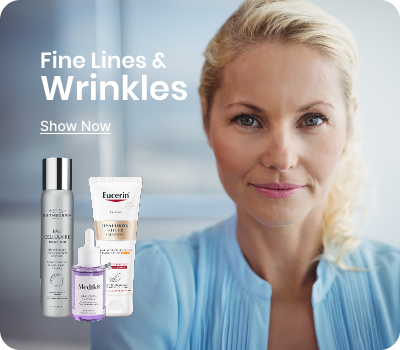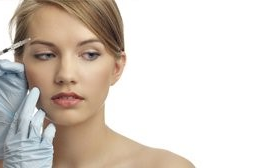
In the age of glowing screens and round-the-clock connectivity, our skin is facing a new kind of stress—one that doesn't come from the sun or the smog, but from the very devices we rely on daily. Blue light, emitted by smartphones, tablets, laptops, and even energy-efficient bulbs, has quietly become one of the most pervasive environmental aggressors. While its effects aren’t always immediately visible, mounting research reveals its potential to accelerate ageing, trigger pigmentation, and disrupt the skin’s delicate barrier. In this article, we uncover the hidden dangers of blue light exposure and explore the powerhouse ingredients that help protect, repair, and future-proof your skin in an increasingly digital world.
What Is Blue Light and Where Does It Come From?
The human skin is constantly exposed to external aggressors—pollution, UV radiation, and environmental toxins have long dominated the conversation. But a quieter, more insidious threat has emerged with the rise of digital dependency: blue light, also known as High-Energy Visible (HEV) light. Unlike traditional skin stressors, blue light is invisible to the naked eye, yet it infiltrates deeply, disrupting cellular balance and accelerating skin deterioration.
The Spectrum Breakdown: How Blue Light Differs from UV Rays
Blue light falls within the 400–490 nanometer range on the visible light spectrum, positioned between UV rays and green light. While UV light primarily affects the epidermis, blue light penetrates even deeper into the dermis, where structural proteins like collagen and elastin reside. Unlike UVB rays that burn or UVA rays that tan, blue light operates subtly, silently initiating oxidative stress and undermining cellular integrity over time.
Everyday Exposure: Digital Devices, Indoor Lighting and More
Blue light exposure isn’t reserved for sunny days. It’s embedded into the rhythm of modern living. Whether streaming late-night shows, checking work emails, or scrolling social media, skin is under near-constant siege. Even indoor LED lighting and energy-efficient bulbs emit blue light, meaning that damage can occur even when the sun isn’t shining.
The Silent Impact of Blue Light on Skin Health
Unlike UVA and UVB rays, blue light penetrates deeply into the dermis—the skin’s foundational layer where fibroblasts, collagen, and elastin reside. This deep infiltration allows it to interact directly with the cells responsible for skin structure and repair. By disrupting mitochondrial function and generating oxidative stress at a cellular level, blue light interferes with the skin’s natural ability to heal and renew. Over time, this results in the breakdown of collagen and elastin, weakening the skin’s structural integrity. The skin becomes less resilient, more prone to sagging, and shows signs of fatigue even in younger individuals.
Accelerated Ageing: Fine Lines, Wrinkles and Loss of Elasticity
Blue light-induced oxidative stress accelerates skin ageing from the inside out. When reactive oxygen species (ROS) accumulate in the skin due to constant exposure to digital devices, they begin to damage cellular proteins, lipids, and DNA. This oxidative burden impairs the production and maintenance of collagen and elastin—two critical components for firm, youthful skin. Over time, fine lines deepen into wrinkles, skin loses its natural bounce, and facial contours begin to slacken. The cumulative nature of blue light damage means that even short, daily exposures can lead to premature ageing, particularly when skin is not properly protected or cared for.
Hyperpigmentation and Uneven Skin Tone from Screen Exposure
Blue light doesn't just age the skin—it also disrupts pigmentation. Scientific studies have confirmed that blue light stimulates melanogenesis, the biological process in which skin produces melanin. This heightened activity can cause persistent dark spots, patches of melasma, and general discolouration, especially in individuals with Fitzpatrick Skin Types IV to VI. Unlike sun-induced pigmentation, blue light-related hyperpigmentation tends to be more diffuse and stubborn, resisting common brightening treatments. Repeated exposure can lead to a mottled or uneven skin tone that becomes increasingly difficult to correct. For those already prone to hyperpigmentation, digital exposure can significantly compound existing issues.
Disrupted Skin Barrier Function and Increased Sensitivity
The skin barrier plays a critical role in retaining moisture and protecting against environmental stress. Blue light exposure weakens this barrier by altering the organisation of lipids within the stratum corneum, the outermost layer of the skin. This disruption leads to increased transepidermal water loss (TEWL), leaving the skin dry, irritated, and vulnerable. The compromised barrier also becomes more susceptible to allergens, pollutants, and microbial invasion, triggering inflammation and chronic sensitivity. With continued exposure, skin may become more reactive, prone to redness, and slow to heal. Maintaining a strong barrier becomes essential in mitigating the cumulative effects of blue light.
Who Is Most at Risk? Understanding Skin Type Vulnerability
Skin Phototypes and Their Sensitivity to Blue Light
Blue light affects all skin tones, but the degree and nature of its impact can vary depending on melanin levels and skin phototype. Fitzpatrick Skin Types IV to VI—characterised by medium to deep complexions—are more prone to developing pigmentation issues from prolonged exposure due to increased melanocyte activity. These skin types can respond to blue light with uneven melanin production, resulting in stubborn dark spots and post-inflammatory hyperpigmentation. In contrast, lighter skin types (I to III) tend to exhibit early signs of ageing, such as fine lines, loss of elasticity, and dryness, due to thinner skin and reduced melanin protection.
Blue Light Risk Factors in Digital Lifestyles and Work Environments
Certain digital habits and environmental conditions significantly increase blue light exposure and the risk of skin damage. High-risk individuals and settings include:
- Professionals working 6–10+ hours daily on screens, such as developers, designers, and analysts.
- Gamers and content creators frequently exposed to multiple high-resolution monitors.
- Remote workers or students in poorly lit indoor spaces, relying on artificial light throughout the day.
- Individuals using smartphones or tablets in bed, especially without night filters.
- Environments with bright LED lighting or minimal access to natural light.
These factors contribute to cumulative skin stress, accelerating signs of ageing, inflammation, and pigmentation over time.
Key Ingredients That Defend, Repair and Fortify

Antioxidants That Neutralise Blue Light-Induced Free Radicals
Antioxidants are essential in combating the oxidative stress caused by blue light exposure. Vitamin C, resveratrol, and coenzyme Q10 are standout defenders in this category. Vitamin C brightens the skin and stimulates collagen production, helping to restore skin vibrancy. Resveratrol, found in grape skins, offers anti-inflammatory benefits while scavenging free radicals. Coenzyme Q10 supports cellular energy production and strengthens the skin’s resilience to environmental stressors. Together, these ingredients neutralise reactive oxygen species (ROS) and enhance the skin’s ability to repair itself, resulting in a healthier, more luminous complexion with consistent use.
Algae Extracts: Nature’s Shield Against HEV Light
Marine algae, especially red and green microalgae, have evolved to thrive under intense UV and HEV (High Energy Visible) light conditions, making them excellent allies for human skin. Rich in carotenoids, peptides, and polysaccharides, these extracts provide a multi-dimensional defence:
- Natural HEV light filtration to reduce blue light penetration.
- Hydration support, helping maintain optimal moisture levels.
- Anti-inflammatory effects to calm redness and irritation.
- Barrier reinforcement, promoting overall skin resilience.
By incorporating algae extracts into skincare, the skin becomes more capable of resisting daily oxidative stress, while also enjoying improved texture, tone, and long-term environmental protection.
Carotenoids Like Lutein and Astaxanthin for Deep Cellular Protection
Lutein and astaxanthin are potent carotenoids that defend the skin from within. Lutein, extracted from marigold flowers, is clinically shown to absorb high-energy blue light and reduce its harmful impact on skin cells. Astaxanthin, derived from microalgae, boasts antioxidant activity many times stronger than Vitamin E or C, protecting cell membranes from lipid peroxidation. These ingredients support the skin’s natural defence mechanisms by:
- Reducing visible signs of ageing, like fine lines and pigmentation.
- Improving elasticity and hydration from the inside out.
- Enhancing skin tone and reducing inflammation.
When used topically or taken as supplements, they offer long-lasting cellular support against digital and environmental stress.
Niacinamide and Panthenol to Strengthen and Rebuild the Skin Barrier
Niacinamide (Vitamin B3) and panthenol (Provitamin B5) are deeply restorative ingredients, especially important in reversing the skin-depleting effects of prolonged blue light exposure. Niacinamide calms irritation, refines pore appearance, and reduces hyperpigmentation, while also enhancing barrier function. Panthenol acts as a humectant, drawing moisture into the skin and promoting faster healing. Their combined benefits include:
- Strengthening the skin’s lipid barrier to prevent moisture loss.
- Calming redness and sensitivity associated with HEV light exposure.
- Stimulating cell turnover for faster regeneration.
- Enhancing suppleness and overall texture.
These vitamins help restore compromised skin and preserve a smooth, hydrated, and even-toned appearance.
Plant-Based Polyphenols That Offer Natural, Layered Defence
Polyphenols are naturally occurring compounds found in plants that exhibit strong antioxidant, anti-inflammatory, and antimicrobial properties. Ingredients like green tea extract, grape seed polyphenols, and turmeric root offer a synergistic approach to skin protection. These phytonutrients create multiple layers of defence:
- Neutralising oxidative stress triggered by digital exposure.
- Boosting microcirculation, enhancing nutrient delivery to skin cells.
- Reducing redness and irritation, especially for sensitive skin.
- Supporting collagen synthesis, promoting firmness and elasticity.
Their cumulative effect enhances skin clarity and resilience, making them a valuable addition to any skincare regimen focused on defending against the damaging effects of modern light pollution.
Building a Blue Light-Proof Skincare Routine
Morning Defence: Prepping Your Skin for a Day at the Screen
Your morning routine sets the foundation for protecting skin against the constant exposure to blue light from digital devices:
- Begin with a gentle cleanse to remove overnight build-up.
- Then apply a potent antioxidant serum—look for formulas with vitamin C, resveratrol, or coenzyme Q10 to neutralise early oxidative stress.
- Follow with a blue light-shielding moisturiser enriched with carotenoids or marine algae extract to reinforce the skin barrier and filter HEV light.
- Complete the regimen with a broad-spectrum physical sunscreen containing zinc oxide or titanium dioxide, ideally enhanced with iron oxides to guard against the full spectrum of visible light damage.
Evening Recovery: Repairing and Calming After Prolonged Exposure
After a day of digital exposure, your evening routine should focus on restoring balance, repairing cellular damage, and calming inflammation:
- Start with a hydrating, non-stripping cleanser to remove impurities and residual sunscreen.
- Apply a soothing toner or essence that contains niacinamide to reduce irritation and support barrier repair.
- Next, use a serum or overnight cream formulated with peptides, ceramides, and panthenol to promote skin regeneration and replenish lost moisture. These ingredients help restore suppleness and firmness, while encouraging the repair of microdamage caused by prolonged screen time.
A consistent night routine strengthens the skin’s resilience and improves texture over time.
Layering Tips: How to Combine Ingredients for Optimal Protection
Strategic layering is essential to ensure your skincare products work harmoniously and deliver maximum benefits:
- Begin with lightweight serums rich in antioxidants, as these should be closest to the skin to penetrate effectively. Allow each product to absorb fully before applying the next to avoid dilution.
- Follow with hydrating essences or humectants, then seal everything in with richer emollient moisturisers.
- In the morning, finish with sunscreen to lock in protection and prevent photoageing.
- At night, alternate between calming actives like niacinamide and richer hydrators such as hyaluronic acid or ceramide creams to support natural repair without overloading the skin.
Beyond Skincare: Lifestyle Habits to Reduce Blue Light Damage
Digital Detox Practices and Screen Time Management
Creating intentional breaks from digital devices is one of the most effective ways to minimise blue light exposure and its cumulative effects on the skin. Begin by integrating screen-free intervals into your day, particularly in the evening hours to help regulate circadian rhythms and promote skin repair during sleep. The 20-20-20 rule is a helpful guideline: every 20 minutes, look at something 20 feet away for at least 20 seconds. This not only relieves eye strain but also gives your facial muscles and skin a rest from the constant tension and glare that can accelerate signs of fatigue and ageing.
Blue Light Screen Filters, Protective Glasses and Lighting Adjustments
Small lifestyle changes can have a big impact when it comes to reducing blue light exposure throughout the day. Consider the following:
- Install blue light-blocking screen protectors on your phone, tablet, or computer to limit direct HEV light contact.
- Wear protective eyewear designed with blue light-filtering lenses to reduce eye strain and indirect skin exposure.
- Switch devices to night mode or “warm tone” settings, especially in the evening, to reduce the intensity of blue light.
- Opt for ambient lighting at home or in your workspace with a softer, yellow-toned hue to create a more skin-friendly environment.
These minor adjustments, when practised consistently, contribute to the skin’s long-term health and protection.
Conclusion
As digital exposure becomes an unavoidable part of modern life, the importance of protecting skin from the invisible threat of blue light cannot be overstated. From accelerating signs of ageing to triggering pigmentation and barrier dysfunction, the long-term impact of HEV light is both clinically significant and increasingly well-documented. Fortunately, with informed ingredient choices and mindful lifestyle adjustments, it’s entirely possible to shield your skin from cumulative damage while supporting its natural resilience. Now is the time to future-proof your routine. Explore scientifically backed skincare formulations and adopt protective habits today—your skin will thank you tomorrow.





